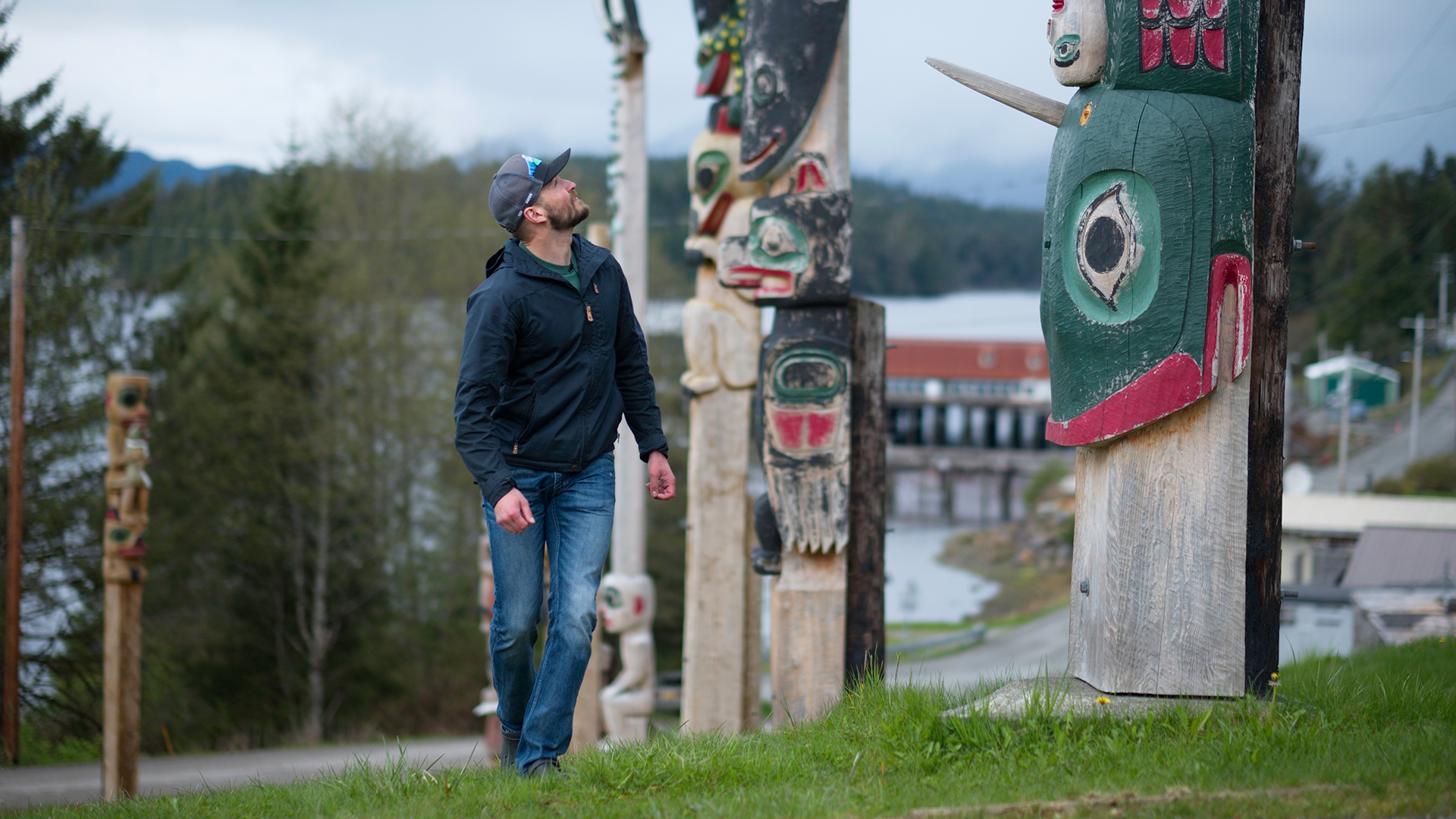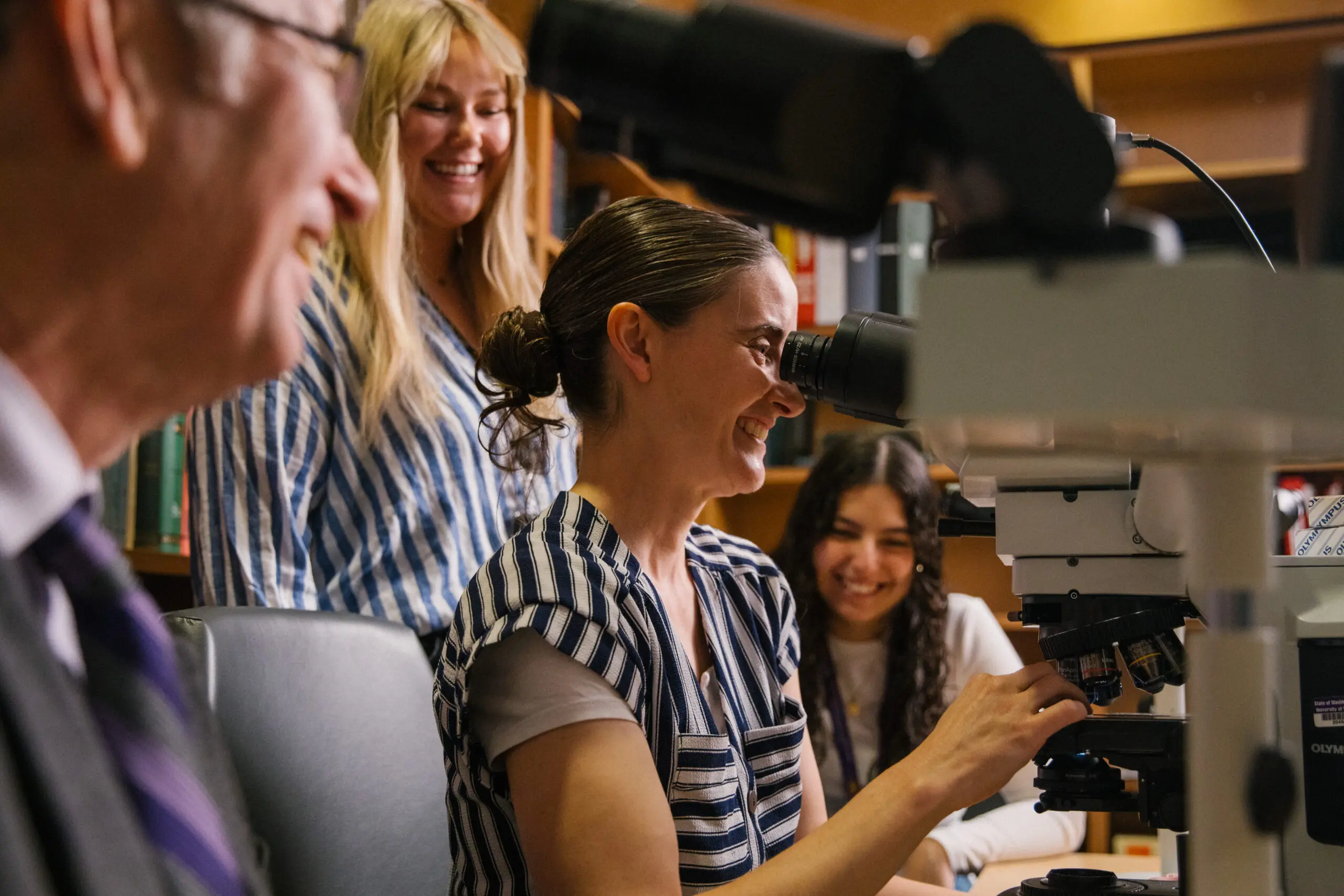Having come from a long line of commercial fishermen, Ellison assumed fishing would be his life’s work, and he enjoys tracking and catching salmon. But the more education he received, the hungrier he became for knowledge of all kinds.
By the time he graduated from college, he had his pilot’s license, boat captain’s license and a degree in mathematics. “Did I think I could be a doctor? No. Did I think I had what it took? No. But I was misinformed,” says Ellison. He notes that, in rural Alaska, there simply weren’t many doctors to talk to — let alone to serve as role models to kids and teens.
It wasn’t until the birth of his daughter, Bella, in Juneau, that he really began to pay attention to what doctors do. A year later, he called up family physician Taylor Dunn, M.D. ’99, the doctor who delivered Bella, to ask if he could shadow him.
“Quite often, people want to shadow for a little while so they can put it on their resume and move on,” says Dunn. “Stephen was different.”
For several years, twice a week, Ellison shadowed Dunn. He also followed physicians in the ER and in vascular surgery. Shadowing for this long, Ellison thinks, gave him an unfiltered view of what being a doctor in rural Alaska is really like, including dealing with difficult issues like substance use.
Dunn notes that his patients, half of whom are Alaska Native, had no problems opening up about their problems with Ellison in the room. In fact, he says, quite the opposite. Because Ellison is also Native, many of them felt more comfortable. Of course, it helps that Ellison is also a very attentive listener.
“There is no doubt in my mind that Stephen will make an excellent doctor. He has proven himself academically. He has the social skills. He has the technical skills. He has the focus and determination,” says Dunn.
One afternoon, the pair of them sat down with a two-year calendar and mapped out everything — all the prerequisites, the MCAT dates, the applications, the interviews — that Ellison would need to get into medical school. “I told him if he doesn’t make it this year, we’ll try again next year,” says Dunn.
For Ellison, having a mentor like Dunn made a huge difference. “I needed somebody to be like, ‘Yeah, you’ve got this. I’ll help walk you through the steps,’” he says.


